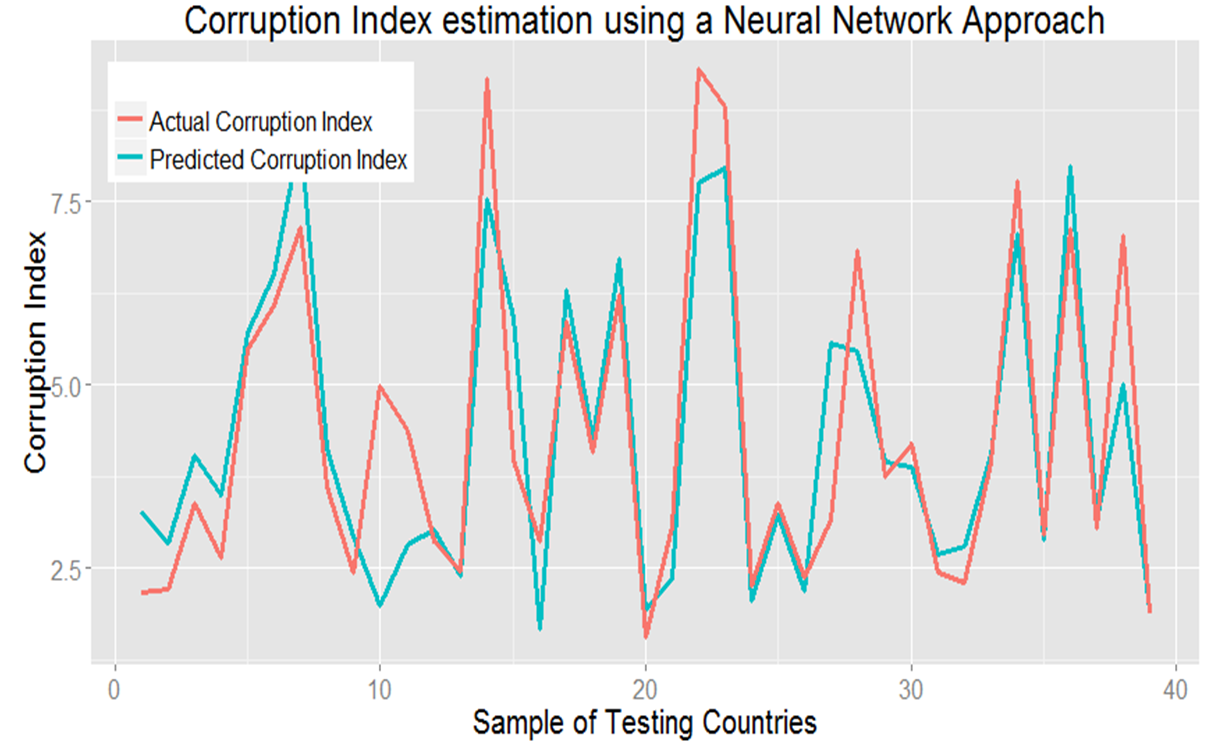TUNESS Chart of the Week (06/28/2014)
We estimate this week the corruption index (as developed by Transparency International) using the Neural Network technique*. Our goal is to predict the corruption index for a sample of 40 countries (with a training sample comprising about 100 countries) based on a set of indicators seemingly uncorrelated with bribery practices. Six covariates are used to develop the present model.

Political Pressure and Control on Media evaluates the degree of political control over the content of news media, the editorial independence of both state-owned and privately owned media and the ability of both foreign and local reporters to cover the news freely and without harassment. Infant mortality rate (as a proxy to the human development and health conditions in the country) is the number of infants dying before reaching one year of age, per 1,000 live births in a given year. Time Required to Start a Business (days) potentially capturing the implicit incentive built into the system for government official to have a rent seeking behavior to shorten the period of administrative review and approval. This time variable captures therefore the number of calendar days needed to complete the procedures to legally operate a business. Inflation, measured by the annual growth rate of the GDP implicit deflator, enters our model as a proxy for the cost of living in a given country that could have a dampening effect on standards of living of certain categories of population and could thus provide an incentive to accept bribery. Government fractionalization captures the degree of harmonization and coordination of any political actions (against for instances possible illegal practices). This variable measures the probability that two randomly chosen deputies from among the government parties will be of different parties. Gender Inequality Index enters the model as a proxy to culture and widely accepted habits among local population. This index reflects gender-based disadvantage in three dimensions- reproductive health, empowerment and the labor market.
The chart above plots the predicted corruption Index against actual index for a sample of 40 countries using the Neural Network computational technique. The model seems to nicely fit the data and with the exception of very few cases, the above indicators used in the model appear to provide a strong theoretical framework to estimate the corruption practices in a given country. While our small sample prevents us from making firm claims regarding causality, the strong correlations highlighted above should lay the ground for future in-depth analysis of relative impacts of key determinants on different types of corruption practices.
*We fitted a single hidden layer Neural Network with 10 nodes.
This note is prepared by Dr. Bechir Bouzid, Tuness Reserach Team.
Data Source:
Freedom House; WDI (World Bank); UNDP.
